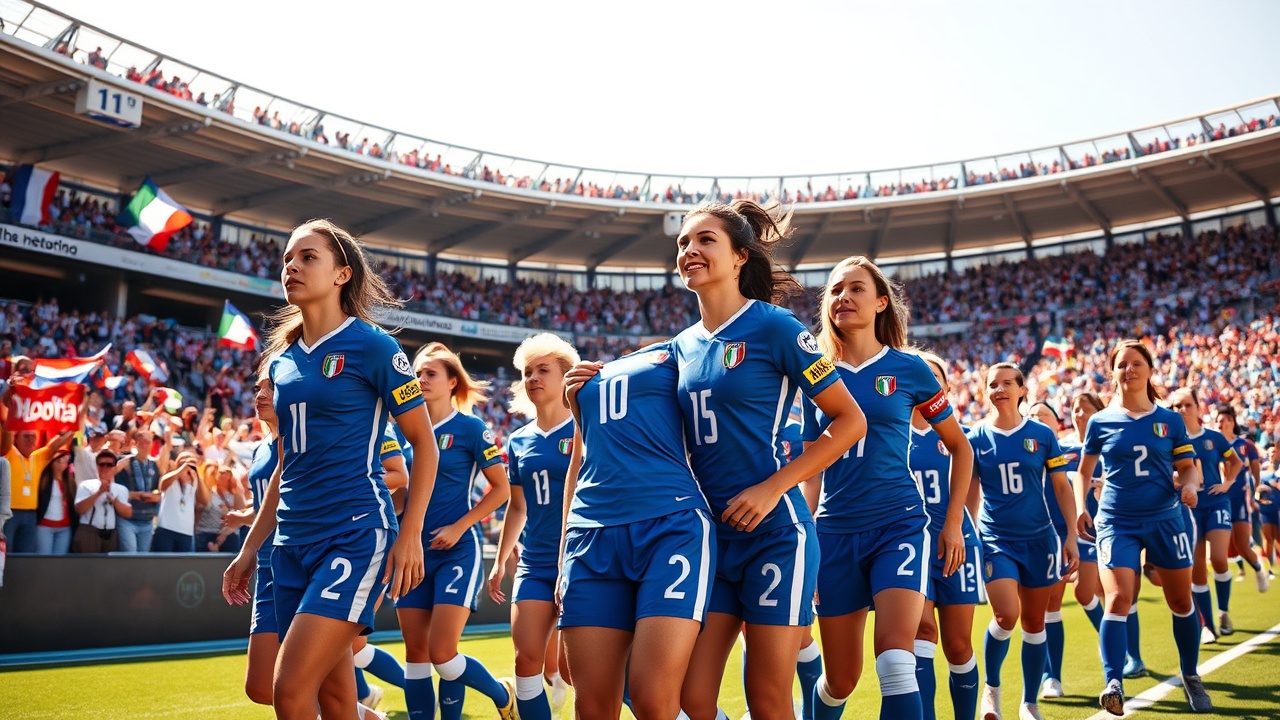Introduction
Italy’s women’s national football team made headlines at the 2019 World Cup in France by making an impressive quarterfinal run with a lineup composed entirely of amateur players. This unexpected success stirred a wave of enthusiasm for women’s football in a country where the men’s team had notably failed to qualify for the World Cup that same year.
Transition to Professionalism
The Italian Football Federation (FIGC) recognized the potential for women’s football and pledged to transition Serie A Femminile to a professional league by 2022. However, after their inspiring performance in 2019, the Italian women’s team faltered, facing early exits from both Euro 2022 and the 2023 World Cup. This disappointing outcome ultimately led to the resignation of coach Milena Bertolini, who acknowledged that the team was not adequately supported to thrive.
New Leadership
Now, as Italy embarks on a new phase with coach Andrea Soncin at the helm, the team revisits the international tournament stage as they prepare for Euro 2025. This summer, they will compete in Group B against formidable opponents like Spain, Portugal, and Belgium. Despite a troubled history marked by gender bias and a lack of investment in women’s sports, Italy’s current team boasts significant improvements, including players like Manuela Giugliano, who made history as the first Italian woman nominated for a Ballon d’Or award.
Cultural Challenges
The plight of women’s football in Italy has been toiled with cultural obstacles, notably a historical “machismo” attitude that hindered development. In 2015, a shocking statement made by the president of the Italian Amateur Football Association reflected this deep-rooted stigma, indicating how far the country had yet to go in embracing female athletes. However, with the FIGC officially establishing a professional league and notable clubs like Fiorentina, Juventus, and AS Roma investing in the women’s game, there has been a resurgence in both interest and support.
Achievements and Impact
The 2019 World Cup brought newfound hope, as Italy’s amateur squad upset expectations, defeating teams like Australia and Jamaica in the group stage before advancing to a memorable round-of-16 match against China. The excitement generated by these performances drew in a record audience for women’s matches on Italian television, highlighting the immense potential of the sport in the country. Players returned home as heroes, reinvigorating national pride in women’s football.
Professional Growth
In the wake of this renaissance, initiatives rolled out by the FIGC have fostered increased professionalism. By removing salary caps in 2022, the league is now more attractive to both domestic talent and foreign players. The vast majority of Italy’s roster, selected for recent international matches, now aligns primarily with Serie A clubs, showcasing the depth and quality of talent emerging within the domestic league.
Looking Ahead
With the likes of AS Roma ascending through regular participation in the UEFA Women’s Champions League, Italian women’s football is steadily gaining traction. As Italy prepares for Euro 2025, Soncin is tasked with molding the team from a mix of seasoned players and promising newcomers, ready to infuse creativity and tactical flexibility into their game.
There is a palpable sense of optimism about Italy’s chances at Euro 2025, especially among players who have witnessed firsthand the transformative impact of increased training opportunities and resources in recent years. The success of Serie A clubs has not only influenced player development but also has helped elevate the profile of women’s football in Italy overall. The challenge lies in securing consistent support from the FIGC to build on this progress and harness the momentum realized since that magical summer of 2019, allowing this generation of players to showcase their talents on the continental stage once again.
Conclusion
As the national team heads to Switzerland this summer, the expectation is not only to compete but to thrive, aiming for a quarterfinal spot that could mirror the successes of 2019 and further solidify Italy’s standing in international women’s football. If they manage to capitalize on their experience and skills against rivals like Spain and Portugal, another wave of enthusiasm could wash over the landscape of women’s football in Italy, further potentializing a brighter future for the sport within the nation.




